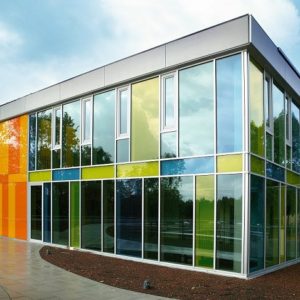The U.S. Energy Information Administration states that in across all building types, electricity accounts for the lion’s share of energy use in commercial buildings at 61%, followed by natural gas at 32%, direct heat at 5% and fuel oil at 2%. Of the electricity used in buildings, lighting accounts for 17%, followed by refrigeration and ventilation at 16%, then cooling at 15%.

On average, 30% of the energy used in commercial buildings is wasted due to inefficiencies, according to the U.S. Environmental Protection Agency. ENERGY STAR calculates that a 10 percent decrease in energy use could lead to a 1.5 percent increase in net operating income — with even more impressive figures as the energy savings grow. The agency offers some low-cost energy efficiency initiatives:
- Measure and track energy performance.
- Turn off lights when not in use or when natural daylight can be used.
- Set back the thermostat in the evenings and other times when a building is unoccupied.
- Educate tenants and employees about how their behaviors affect energy use.
- Improve operations and maintenance practices by regularly checking and maintaining equipment to ensure it is functioning efficiently.
- Optimize start-up time, power-down time, and equipment sequencing.
- Revise janitorial practices to reduce the hours that lights are turned on each day.
Some building types are more difficult to monitor than others. In offices, for example, workers enter and exit at predictable times of the day, while in schools or retail, occupant traffic patterns may need to be analyzed. Energy management data can also track where energy is being used and potentially wasted.
Energy saving design and operation
MIT undertook a study of two of its on-campus buildings with two distinctly different functions: its Ronald M. McNair Building, which is predominantly composed of laboratories, and its Sloan Building, a more typical working space with classrooms, offices, and open reception areas. Among their findings, researchers found some simple energy saving rules for designing and operating buildings. One example:
“…grouping offices together can prevent the loss of heat from occupied, heated spaces to unoccupied, unheated ones. And at times, spaces can be designed to take advantage of ‘thermal seepage’ through internal walls. For instance, [a] continuously heated lecture hall can be surrounded by heavily used offices so that someone benefits from the warm air even when the lecture hall is empty.”
MIT’s study stresses one important aspect that may be the most difficult for designers and operators of buildings when considering energy efficiency measures: behavioral change of the end user. As their research scientist Rex Britter states, encouraging people to change their habits may require some creative thinking.


